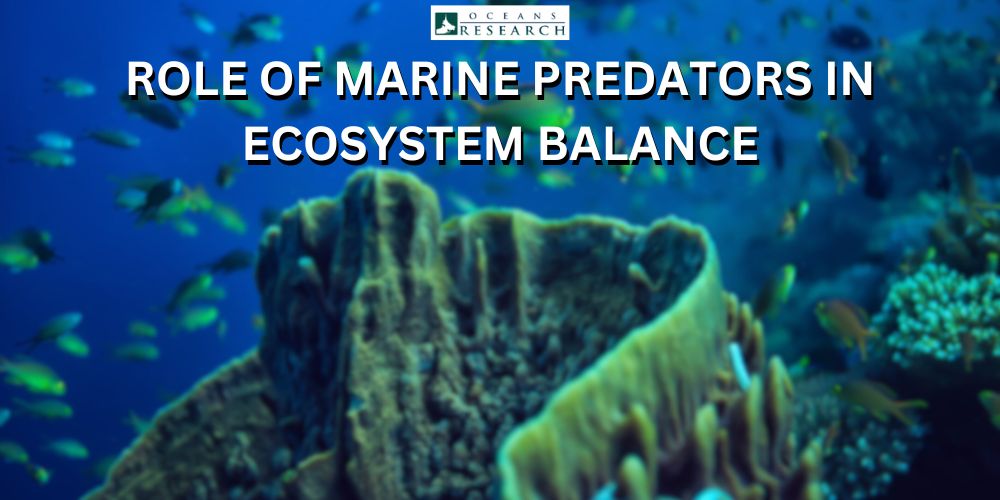
The Role of Marine Predators in Ecosystem Balance
Marine predators play a crucial role in maintaining the health and stability of ocean ecosystems. As apex predators or mesopredators, they regulate prey populations, promote biodiversity, and even influence the structure of marine habitats. From sharks and orcas to seals and large fish species, these animals contribute significantly to the delicate equilibrium of marine environments. Without them, ecosystems can become imbalanced, leading to cascading effects that disrupt food chains, alter habitats, and reduce biodiversity.
Regulation of Prey Populations
One of the primary roles of marine predators is to control the population of their prey. By preying on weaker, sick, or overabundant species, predators help maintain a healthy and sustainable population balance. This natural regulation prevents overgrazing of primary producers, such as seagrass beds and coral reefs, essential for various marine species.
Sharks are key regulators of marine food webs. In regions where shark populations have drastically declined due to overfishing and habitat destruction, prey species like rays have experienced unchecked growth. This can lead to the overconsumption of shellfish, negatively affecting the marine economy and ecosystem stability. Similarly, orcas play a pivotal role in controlling the numbers of seals and sea lions, which in turn regulate fish populations.
Promotion of Biodiversity
Marine predators contribute to biodiversity by preventing any single species from dominating an ecosystem. This ensures that multiple species can coexist, which strengthens ecological resilience. By preying on certain populations, predators prevent monopolization of resources, allowing for a greater variety of species to thrive.
For example, sea otters, which are predators of sea urchins, help protect kelp forests. Without sea otters, sea urchin populations explode, leading to the destruction of kelp beds, which serve as vital habitats for fish and other marine organisms. Similarly, large predatory fish-like groupers keep populations of smaller predatory fish in check, maintaining a balance between species at different trophic levels.
Influence on Habitat Structure
Beyond direct predation, marine predators also shape habitats through their behaviors. The presence of a predator can alter the behavior of prey species, leading them to modify their feeding and movement patterns. This phenomenon, known as the "ecology of fear," can have widespread effects on marine environments.
For example, when tiger sharks are present in seagrass meadows, herbivorous species like dugongs and turtles tend to avoid overgrazing specific areas. This results in a more evenly distributed grazing pattern, which promotes healthier seagrass growth and prevents habitat degradation. The fear of predation can thus help maintain habitat integrity and resource availability for a diverse range of species.
Cascading Effects of Predator Decline
When marine predator populations decline due to overfishing, climate change, and habitat loss, the consequences can be severe. The removal of a top predator can lead to a trophic cascade, where changes in one part of the food web cause ripple effects throughout the entire ecosystem.
A well-documented example of this is the decline of shark populations in the Atlantic Ocean. With fewer sharks to prey on cow nose rays, ray populations surged, leading to the depletion of scallops, a key species in commercial fisheries. This collapse affected both the economy and marine biodiversity. Similarly, the removal of large predatory fish in coral reef ecosystems can result in an increase in algae-eating fish, which disrupts the delicate balance of reef health.
Human Impact and Conservation Efforts
Unfortunately, human activities such as industrial fishing, pollution, and climate change are placing immense pressure on marine predators. Many species, including various shark species, tuna, and whales, are experiencing population declines due to habitat destruction and overexploitation.
Efforts to protect marine predators are crucial to maintaining ecosystem balance. Marine protected areas (MPAs) have proven to be effective in preserving predator populations by restricting fishing activities and reducing human impact. Policies that limit bycatch, enforce sustainable fishing practices, and curb illegal hunting are also essential to conservation efforts.
Public awareness campaigns and scientific research are vital in shifting public perception of marine predators. Often portrayed as threats to humans, predators like sharks and orcas are essential to ocean health. Conservationists aim to foster greater appreciation and understanding of these keystone species through education and advocacy.
Conclusion
Marine predators are not just fearsome creatures at the top of the food chain; they are essential architects of ocean balance. By regulating prey populations, promoting biodiversity, shaping habitats, and preventing cascading ecological effects, they play a fundamental role in sustaining marine ecosystems. Protecting these predators is not just about conserving individual species; it is about safeguarding the entire marine environment upon which countless species—including humans—depend. Through conservation efforts and sustainable practices, we can ensure that marine predators continue to fulfill their vital ecological roles, preserving the health and stability of our oceans for generations to come.
For more insights into marine research and conservation efforts, visit Oceans Research.











